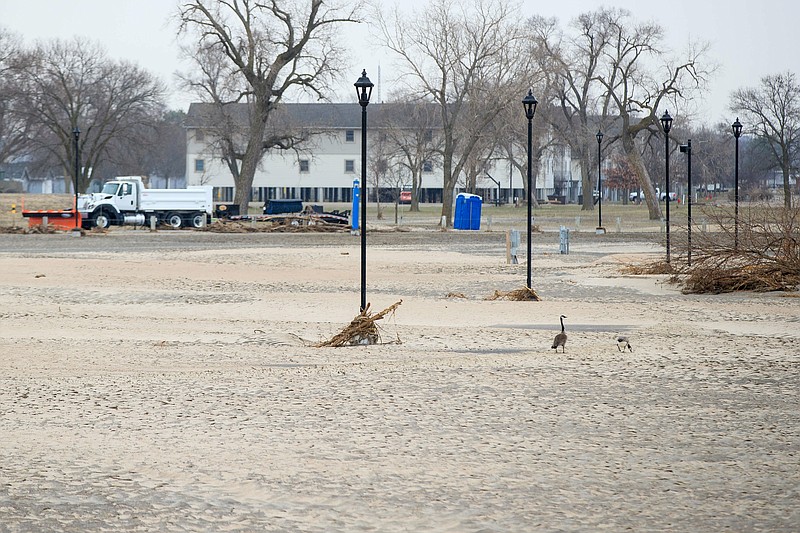COUNCIL BLUFFS, Iowa (AP) - U.S. Army Corps of Engineers officials were set to meet Wednesday with the governors of four flood-ravaged Midwestern states amid criticism of the federal agency for its management of swollen waterways.
Iowa Gov. Kim Reynolds, Nebraska Gov. Pete Ricketts and Missouri Gov. Mike Parson, all Republicans, and Kansas Gov. Laura Kelly, a Democrat, were to meet with the U.S. Army Corps of Engineers and the Federal Emergency Management Agency in Council Bluffs.
Parson is among critics who have accused the Corps, which manages the river's dams, of making the flooding worse. Last month, Parson admonished the agency to prioritize human safety and property over other goals, such as preserving fish and wildlife habitat.
But the Corps has said it works to balance all its priorities and that much of the flooding was well out of its control. The agency said that much of the water that created the flooding came from record rains and melting snow that flowed over frozen ground and directly into the river downstream of its dams, all while massive amounts of water filled Missouri River reservoirs and had to be released.
On Wednesday, the Corps released numbers showing record March runoff in the upper Missouri River Basin above Sioux City, Iowa, of 11 million acre feet - nearly 4 million acre feet more than the previous record of 7.3 million set in 1952. The average March upper basin runoff is 2.9 million acre feet, the Corps said.
Officials have estimated the flooding caused nearly $1.4 billion in damage in Nebraska and more than $1.6 billion in Iowa. That includes an estimated $1 billion of damage to farms in both states, where flooding destroyed stored crops, tore up land and equipment and killed livestock. Thousands of homes and businesses have been damaged or destroyed in Nebraska alone. The damage total is expected to grow as more assessments are made.
Kansas and Missouri officials are still waiting on damage estimates, although Kansas officials said their state saw flood damage limited to about 31,000 acres of mostly farmland and some stored grain. In Missouri, the surging river caused dozens of levee breaches that inundated about 168,000 acres in Missouri's two hardest-hit counties of Holt and Atchison.
Officials have said the March floods could be just the beginning of a rough spring, as hefty snowpack in the northern Plains adds to already swollen rivers and streams. That includes the Mississippi River, which started falling Wednesday in St. Louis as the crest moves downstream.
St. Louis closed its floodgates in advance of Tuesday's crest. Although the flooding there isn't classified as major, it closed some roads, including stretches of Missouri 94 and 67.
Downstream, the flood fight continues. The Corps said it handed out more than 100,000 sandbags to communities in its St. Louis district, including Clarksville, parts of Jefferson County and Ste. Genevieve.

